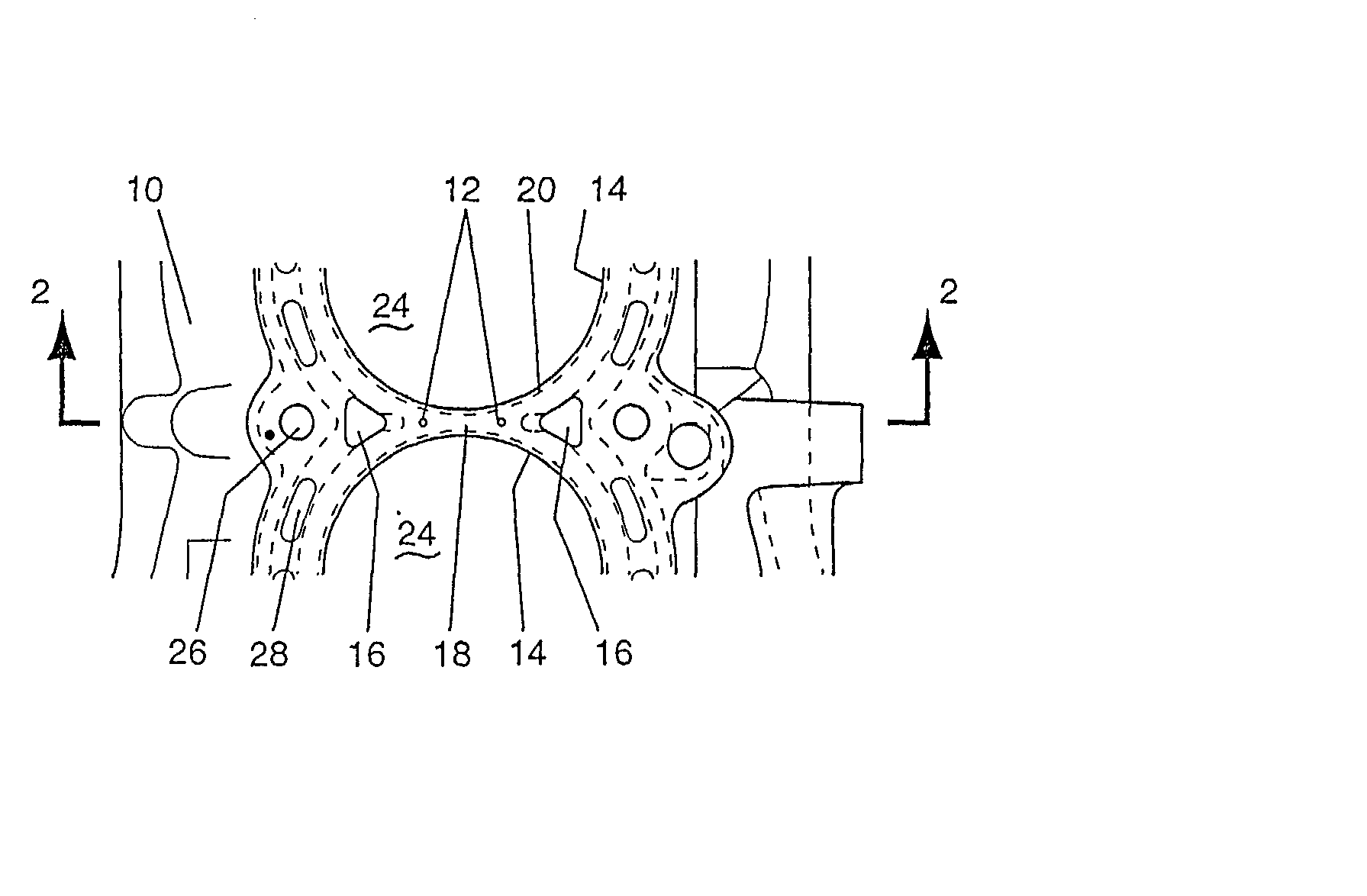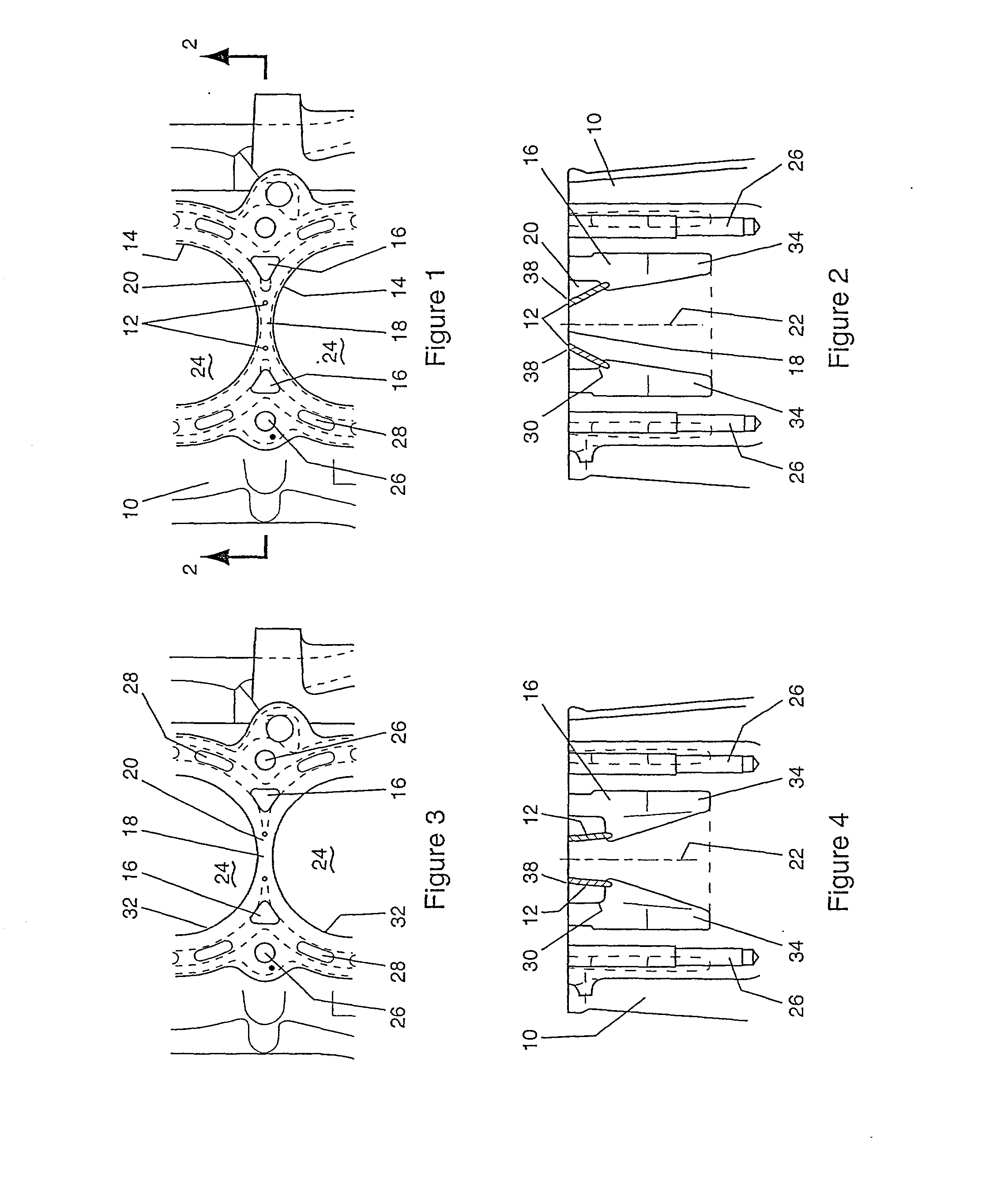Interbore cooling system
- Summary
- Abstract
- Description
- Claims
- Application Information
AI Technical Summary
Benefits of technology
Problems solved by technology
Method used
Image
Examples
Embodiment Construction
[0038] FIG. 1 and 2 show angled drilled passages 12 in cylinder block 10, the passages 12 not crossing each other. The block 10 has a number of bores 24 each having 2 mm liner 14. After the drilled passages 12 are made, there is still 2.5 mm of metal and 2 mm of liner remaining. Together with a 4 mm minimum gasket width, the gap will provide for adequate sealing. Head bolt holes 26 and water jacket openings 28 are provided, as is normal.
[0039] In order to provide at least 4 mm of metal between a water jacket 16 and each liner 14, the closest the water jacket 16 can get to the vertical axis 22 of the centre 18 of the interbore bridge 20 is about 12 mm. As can be seen, the top 38 of the passages is adjacent the centre 18--the region of highest heat concentration. However, they may be at or in the central region 18.
[0040] In FIG. 2, the water jacket 16 is extended to provide a surface 30 normal to water passages 12. The surface 30 is relatively flat and is required to ensure the dill b...
PUM
 Login to View More
Login to View More Abstract
Description
Claims
Application Information
 Login to View More
Login to View More - R&D
- Intellectual Property
- Life Sciences
- Materials
- Tech Scout
- Unparalleled Data Quality
- Higher Quality Content
- 60% Fewer Hallucinations
Browse by: Latest US Patents, China's latest patents, Technical Efficacy Thesaurus, Application Domain, Technology Topic, Popular Technical Reports.
© 2025 PatSnap. All rights reserved.Legal|Privacy policy|Modern Slavery Act Transparency Statement|Sitemap|About US| Contact US: help@patsnap.com


